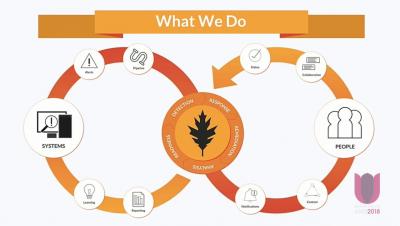Operations | Monitoring | ITSM | DevOps | Cloud
Alerting
Tailor alarm content to your specific needs using Alarm Modifier
DevOps teams use a number of monitoring, project management, log management, and other IT management tools to receive alerts when something’s up. While this helps IT teams keep their system up and running at all times, the content of the alerts sent by some applications might not be relevant or insightful to the technicians who work on those issues. Now, with the Alarm Modifier feature, you can add new fields to an alarm, modify existing fields, rename fields, or remove them altogether.
Incident updates now threaded on Twitter
Automatic Twitter posts from Statuspage incident updates now link together into one Twitter thread. This update applies to Tweets that are posted automatically via the Statuspage Twitter integration.
9 Mega-Trends for IT Operations Management
The Science of On-Call
Over the past decade, multiple scientific studies have confirmed what we in DevOps have known for ages: Being on-call is a pain! But just how bad is it?
GrafanaCon EU 2018: VictorOps
SIGNL4 Outtakes
Alert Alert! The Firebase Realtime Database now supports Google Stackdriver Alerts!
Dashboards are great, but what if you're not checking them? Wouldn't it be great to know when you have a huge spike in traffic, or if you're about to hit your concurrent connections limit for a single database? Don't worry, Google Stackdriver Alerts have you covered!
Feature: Custom Alert Times
Not all websites are the same. From personal blogs to business websites, online shops to community forums, SaaS applications to video streaming services, websites come in all shapes, sizes and flavours. It follows that not all websites have the same uptime requirements. If a personal blog goes down for 20 minutes it might not be a big problem, but the same downtime for a popular online shop could be a major concern.
Five Status Page Messages to Send During an Outage
During a server outage, your IT team can feel pulled in two different directions: First, having to communicate with customers about the issue and second, fixing the actual problem. Since you want to keep your customers informed while working to resolve the issue, there’s a solution tailored to your team: A status page can help you communicate while keeping pages updated with specific, clearly-written automated messages.









